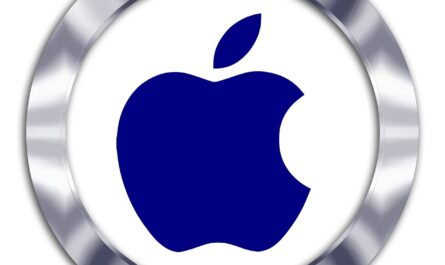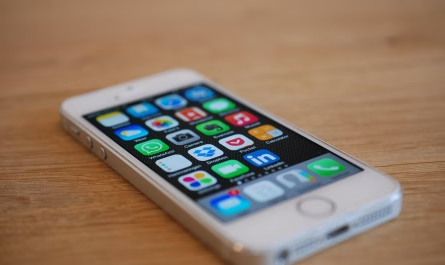From Idea to Delivery in Just 48 Hours
A few months ago, I faced a challenge. A local restaurant wanted a simple food delivery app but didn’t have the budget—or the time—for custom development. Normally, such a project would take weeks of coding and a developer’s salary. But I decided to try something new: no code app development.
Armed with free tools, templates, and a little creativity, I managed to build a food delivery app in just 48 hours. No coding background. No expensive development team. Just visual drag-and-drop builders and platforms anyone could use.
And here’s the best part: you can do it too. Whether you’re a startup founder, a freelancer, or even just curious about Flutter for beginners, this guide will show you exactly how to bring your own food delivery app idea to life in a single weekend.
1. Why Build a Food Delivery App Without Coding?
The Problem With Traditional Development
- Hiring a developer = expensive (average $10k–$50k for a simple app).
- Long timelines = months before launch.
- High risk = what if your idea doesn’t work?
The No-Code Advantage
- Speed: Build and launch in days.
- Affordability: Many no-code platforms are free or cheap.
- Accessibility: Perfect for non-technical founders.
- Scalability: Start small, upgrade later.
In short, no code app development makes entrepreneurship more accessible.
2. What Does a Food Delivery App Need?
Before you start, map out the must-have features:
- User Side (Customers):
- Browse restaurants or menus
- Add to cart
- Place orders
- Pay online
- Track deliveries
- Admin Side (Restaurants):
- Manage menus
- Receive and process orders
- Update availability
- Delivery Side (Couriers):
- Accept delivery tasks
- Navigate to customers
- Update status
👉 A weekend build doesn’t need every feature at once. Focus on the MVP (Minimum Viable Product): ordering + delivery tracking.
3. Step 1: Pick Your No-Code Platform
Here are the best startup app tool choices for food delivery apps:
- Glide: Turns Google Sheets into apps instantly. Great for prototypes.
- Adalo: Drag-and-drop app builder, publishes directly to iOS/Android.
- Bubble: Best for web apps with advanced logic.
- Thunkable: Mobile-first builder, integrates payments.
- FlutterFlow (low-code, based on Flutter for beginners): Hybrid approach, very flexible.
For my 48-hour build, I used Adalo because it let me launch on both iOS and Android quickly.
4. Step 2: Build Your App Structure
Here’s how I structured mine in less than 4 hours:
- Splash Screen → App logo + login/signup.
- Restaurant List → Simple card view with images.
- Menu Page → Items with “Add to Cart.”
- Cart/Checkout → Total + payment integration.
- Order Tracking → Status updates in real time.
👉 With no code app development, this structure is drag-and-drop. No coding. No backend headaches.
5. Step 3: Add Payments and Delivery Tracking
- Payments: Stripe (easy to integrate with Adalo/Thunkable).
- Delivery Tracking: Use Google Maps API or prebuilt plugins in Bubble/Adalo.
- Notifications: Push notifications for order updates (Adalo and Thunkable support this).
Even if you’re working with Flutter for beginners, tools like FlutterFlow simplify integration—most options are plug-and-play.
6. Step 4: Launch Your MVP
Testing
- Run through a few test orders yourself.
- Ask friends to simulate customers/deliveries.
Publishing
- Use your platform’s one-click publishing to App Store/Google Play (Adalo, Thunkable).
- Or launch as a progressive web app (PWA) with Bubble/Glide—no app store approval needed.
Cost
- Free to ~$50/month depending on platform.
- Compare that to $20,000+ for traditional development.
7. When to Use No Code vs. Flutter for Beginners
- No Code App Development:
- Great for prototypes, MVPs, small-scale startups.
- No coding required.
- Build food delivery app fast, test with real users.
- Flutter for Beginners:
- Requires basic coding but offers more control.
- Best if you plan to scale into a fully custom app later.
- Platforms like FlutterFlow let you bridge between no-code and full code.
👉 Rule of Thumb: Start no-code, scale with Flutter when you’re ready.
8. Real-Life Examples
- Local Bakery App (Adalo): A bakery launched its own delivery service in 72 hours. Customers order cupcakes via app → driver delivers within the city. Cost = $0 upfront.
- COVID-19 Food Bank (Glide): Volunteers built a food distribution app from Google Sheets in under a week.
- Fitness Meal Startup (Bubble): Founder built a subscription meal delivery web app with recurring payments and scaled to $50k ARR before hiring coders.
9. Challenges (and How to Overcome Them)
- Free plan limits: Some platforms cap users/features. Upgrade only when needed.
- Design restrictions: Templates may look generic. Solve with custom branding.
- Scaling issues: If you get 10k+ users, consider moving to Flutter or hiring a dev.
- Learning curve: Each platform has tutorials—block out 2–3 hours to learn basics.
10. Future of Food Delivery Apps With No Code
- AI + No Code: AI will design app layouts and workflows instantly.
- Deeper integrations: Payment, maps, and delivery APIs will be one-click.
- Flutter + No Code fusion: Tools like FlutterFlow will blur lines between coding and drag-and-drop.
- Global impact: Local restaurants can own their delivery channels instead of paying commissions to giants like Uber Eats.
FAQs
Q: Can I really build a food delivery app in a weekend?
A: Yes. A simple MVP (ordering + delivery tracking) is possible in 48 hours with no-code platforms.
Q: Which no-code tool is best for food delivery apps?
A: Adalo (for mobile apps), Bubble (for web apps), Glide (for quick prototypes).
Q: Is Flutter good for beginners?
A: Yes—especially with FlutterFlow, which bridges no-code and coding.
Q: How much does it cost?
A: $0–$50/month for most no-code platforms. Compare that to $20k–$50k for custom coding.
Q: When should I move beyond no-code?
A: Once you have consistent users/revenue and need custom features or scaling.
Conclusion: Build, Test, Deliver
In just 48 hours, I managed to build a food delivery app without touching a single line of code. That’s the power of no code app development: speed, affordability, and accessibility.
For beginners, even those curious about Flutter, the journey starts simple. No-code lets you test your idea, impress investors, and serve your first customers without breaking the bank. Later, you can always scale with Flutter or full development.
So the question isn’t can you build a food delivery app in a weekend? The real question is: what’s stopping you from starting this weekend?



